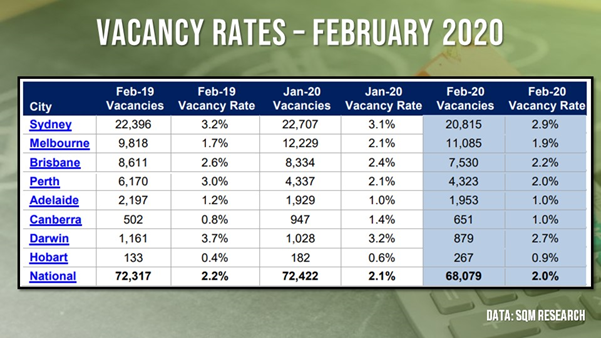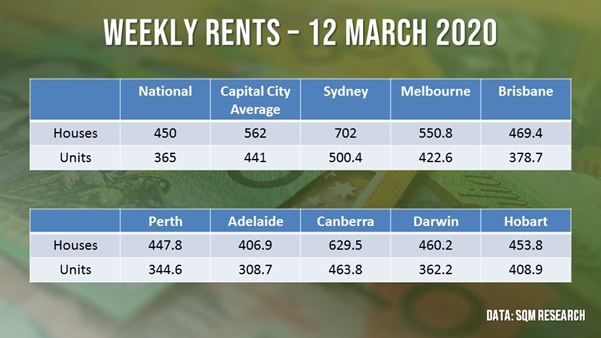The combined vacancy rates across capital-city rental markets declined in February on a monthly and annual basis, according to the latest figures from SQM Research.
All state capitals, save for Hobart and Adelaide, reported a decrease in vacancy rate in the month. The vacancy rate in Hobart increased from 0.6% to 0.9% while Adelaide remained steady at 1%.
Darwin reported the most significant decline in vacancy rates, from 3.2% to 2.7%. This made Sydney the city with the highest vacancy rate at 2.9%, which reflected a decrease from 3.1% in the previous month.
On an annual basis, only Melbourne, Canberra and Hobart recorded higher vacancy rates.
Louis Christopher, managing director at SWM Research, said February usually marks the "new year" for the rental market as demand intensifies.
"The decline in vacancy rates is a reflection of a seasonal increase in rental demand plus ongoing decline in dwelling completions and the ongoing increase in population," he said.
Will the COVID-19 outbreak dampen vacancy rates? It could boil down to the impact of the coronavirus to the economy, Christopher said.
"We are likely to record further declines in rental vacancy rates as 2020 progresses unless the country enters into a prolonged economic depression," he said.
The table below shows the rental vacancies in each city:

Despite the decline in vacancy rates, asking rents across capital cities decreased by 1.2% for houses and 0.2% for units over the week to 12 March 2020.
Sydney, Melbourne, Adelaide, and Canberra all recorded decreases in asking rents for both houses and units over the month. Perth was the only city to record rent increases for both houses and units, at 0.1% and 2.5%, respectively.
Below is a table showing the latest asking rents figures from each capital city:
